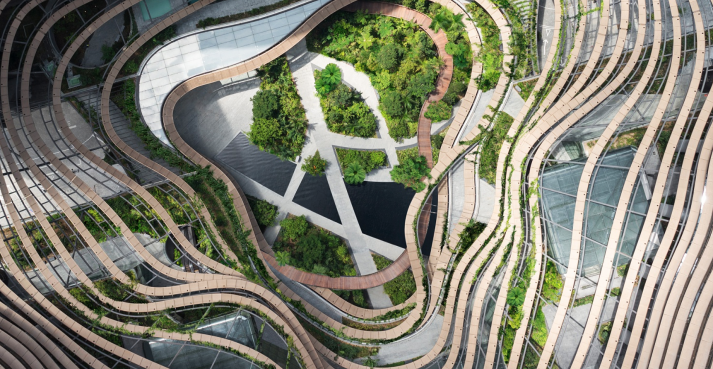Landscape Design Fundamentals Explained
Landscape Design Fundamentals Explained
Blog Article
The 15-Second Trick For Landscape Design
Table of ContentsWhat Does Landscape Design Mean?Landscape Design for Dummies10 Easy Facts About Landscape Design ShownSome Ideas on Landscape Design You Need To Know
A lawn can generally be split into 3 areas: public (the front lawn), private (the back lawn), and service (typically the side yard). The place of task locations depends mainly on the kind of area, the dimension of room needed, the kind of activity, and the preferred proximity to other activities and frameworks.
The outside wall surface of your house usually functions as the first wall surface or starting point of an outdoor room. Incompatible uses should be divided, and relevant tasks, such as cooking and dining, ought to be created to make the lawn a lot more reliable and satisfying. When utilizing hardscape to develop areas, make use of building and construction product similar to that made use of in your home for connection from your house right into the garden.
Linked rooms. Debt: Gail Hansen, UF/IFAS Making use of similar hardscape functions and duplicating plants pulls the eye around the garden.
This gives a sense of enigma that advertises exploration and discovery of the landscape. From a style perspective, plant materials have three major features in the landscape: visual, architectural and practical. Cosmetically, plants create an aesthetically enjoyable atmosphere and structurally plants organize and specify spaces. Plants are utilitarian because they can transform the setting for the convenience of the customer by customizing light, temperature and moisture.
The Basic Principles Of Landscape Design
For emotional convenience plants are used as physical or implied barriers for personal privacy and security. Physical barriers block both the sight and access to a room and consist of fences, walls and plant bushes. Landscape Design. Implied obstacles, usually low expanding plants, block gain access to however not the sight (Figure 9). Various other functions of plants consist of cleaning the air, avoiding erosion and soil loss, preserving moisture in the dirt, and returning raw material to the soil.
Physical and suggested barriers. Credit Rating: Gail Hansen, UF/IFAS For these reasons, the sorts of plants to be utilized (such as trees, shrubs, or groundcovers) should be selected in the beginning of planning. Plant kinds are picked for their practical capabilities to ensure that their future objective and required space can be thought about at the same time.
The overhead airplane, the vertical aircraft and the ground plane should all be taken into consideration to create unit. Once the shape of a plant bed has actually been established, the plants should be massed (grouped) and split to achieve visual unity and the desired quantity of room. The dimension of a plant mass will certainly depend upon the total size of the lawn, the dimension of the individual plants in the mass, and the emphasis or effect preferred from the plant material.
Each plant mass is in front of, behind, or next to, another mass. Credit Report: Gail Hansen, UF/IFAS Duplicating plants within a mass and repeating masses with similar plants links the yard with each other. The specific plant attributes need to be thought about to effectively layer and mass plants.
The Ultimate Guide To Landscape Design
All plant make-ups begin with the primary framework plants, the big, primarily evergreen background plants-such as the trees and huge shrubs. These plants different or enframe rooms, control the dimension of the space, and give the starting factor for picking the appropriate characteristics of the second layer, midground plants, for massing and infill.
Vital points in the yard need to be highlighted by the use distinct plants, unique frameworks, or garden accessories. Marking thresholds or entryways to spaces can be made with gateways, arbors, and actions, or with using unique and vivid plants. The kind and/or design theme of the garden will often aid establish the crucial factors and just how they must be highlighted.
Other crucial areas in the yard are prime focus, which is utilized to aesthetically arrange a designed location. The type of prime try this web-site focus often depends on the seeing viewpoint. Different point of views or perspectives can disclose various structures in the landscape that might call for a selection of focal points. Contrasting texture, form, size and color will capture and hold the eye.
The Buzz on Landscape Design
Number 13. Plant types. Credit Report: Gail Hansen, UF/IFAS After form, structure is the following leading feature of a plant; crude, medium and fine textures can be used for contrast and emphasis in the landscape. Form and appearance both trump shade in the yard for a lot of the year. reference Nonetheless, throughout certain periods, color will certainly be one of the most visible attribute of the garden.


The pleasant scent of plants, the sound of wind in the trees, the noise and texture of water, and the shades and textures of sculptures, pots and garden furniture all include to the experience of the garden. One information that is commonly overlooked is the impact of light on the appearances of the plants.
The entire yard adjustments in function and look throughout the day, and the training course of a year, as the light and temperature change from early morning to night and season to season. Plant choice have to take into consideration a plant's development price, its fully grown dimension and type, and the upkeep it will certainly call for.
It is necessary to recognize the eventual mature dimension of plants so they can be positioned in the right area and spaced correctly when you could try this out they are installed. Providing plants space to grow is an obstacle due to the fact that the usual mature size is commonly based on optimal growing conditions and the environmental problems of a site may create a plant to enlarge or stay smaller sized.
Report this page